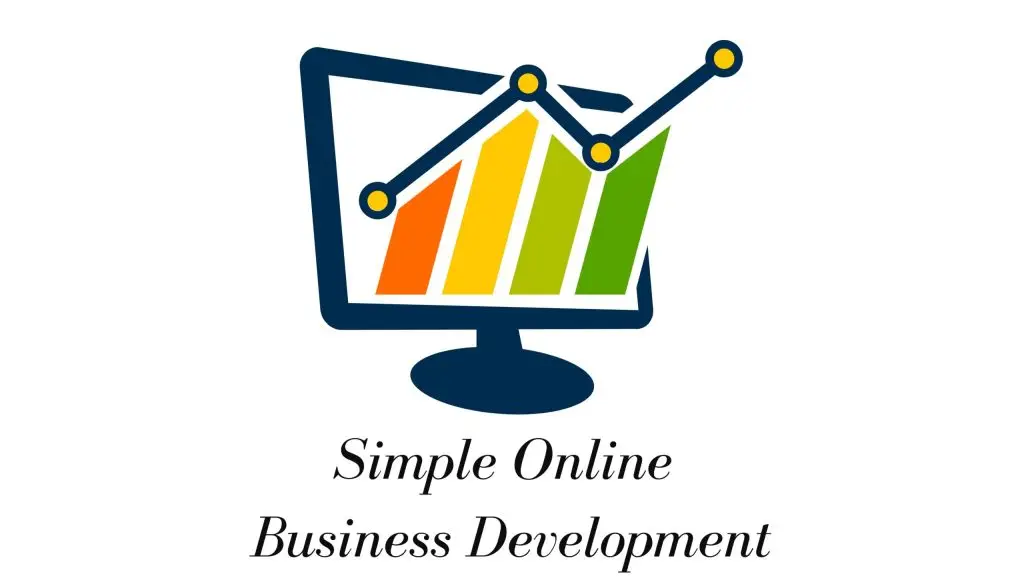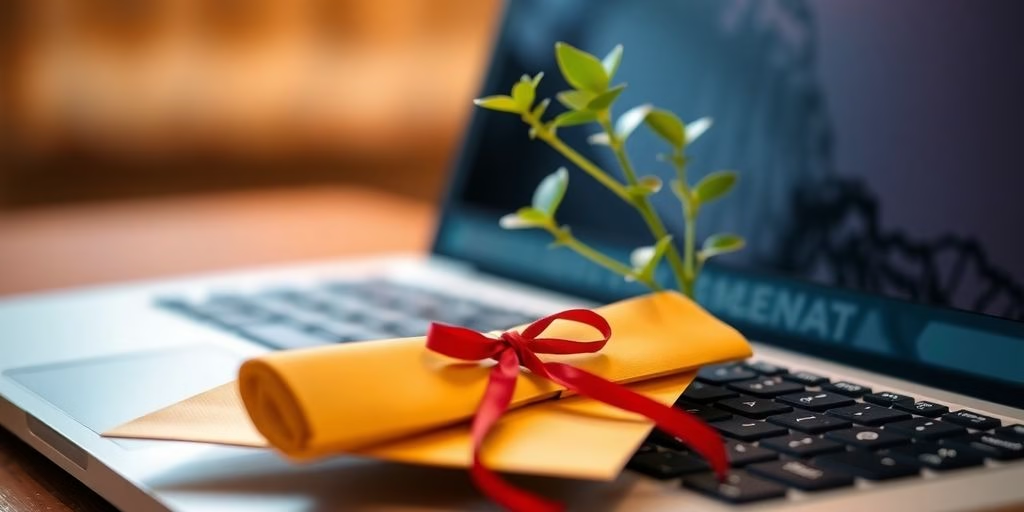Thinking about starting your own business? It can feel like a lot to take on, but getting started might be easier than you think. There are tons of free online entrepreneurship courses with certificates available right now. These courses can help you learn the ropes, from basic business ideas to getting your products out there. It’s a good way to get some solid business knowledge without spending a dime, and you even get a certificate to show for it.
Key Takeaways
- You can learn important business skills for free.
- These courses come with certificates to boost your resume.
- Topics cover everything from starting up to marketing.
- You can learn at your own pace, which is super convenient.
- It’s a practical way to prepare for running your own business.
Kickstart Your Entrepreneurial Journey
Ready to take the leap? Starting a business can feel like climbing a mountain, but with the right knowledge, you can totally do it! These courses are designed to give you the boost you need to get going. Think of them as your personal launchpad into the world of entrepreneurship. It’s all about getting that entrepreneurial mindset right.
Foundations of Entrepreneurship: Your First Steps
So, you’ve got an idea? Awesome! This course is all about turning that spark into something real. We’ll cover the basics, like:
- Identifying opportunities (they’re everywhere!).
- Understanding the market (who are your customers?).
- Validating your idea (is it actually a good one?).
It’s about getting real with your idea and figuring out if it has legs. Don’t be afraid to pivot if needed – that’s part of the journey!
Startup Secrets: Unlocking Business Growth
Alright, you’ve got the basics down. Now it’s time to learn some secrets to really make your startup shine. This course dives into strategies for growth, from marketing to sales and beyond. We’re talking:
- Growth hacking techniques (think outside the box!).
- Building a strong brand (make people remember you).
- Scaling your operations (getting ready for the big time).
Crafting Your Business Plan: A Roadmap to Success
Okay, let’s get serious. A business plan isn’t just some boring document; it’s your roadmap to success. This course will guide you through creating a plan that actually works. You’ll learn how to:
- Define your mission and vision (what are you all about?).
- Analyze your competition (know thy enemy!).
- Project your financials (money, money, money!).
With a solid business plan, you’ll be way ahead of the game. Plus, it’s super helpful when you’re seeking funding or Concept To Course from investors.
Mastering Business Fundamentals
Alright, so you’re ready to get serious about business? Awesome! This section is all about building that solid base of knowledge. Think of it as leveling up your business skills. We’re talking about the stuff that every successful entrepreneur needs to know, no matter what kind of business you’re running. It’s like learning the rules of the game before you start playing – makes a huge difference!
Business Strategy: Planning for Victory
Okay, so you’ve got a great idea. Now what? That’s where business strategy comes in. It’s not just about what you’re doing, but how you’re going to do it. Think of it as your game plan. A solid business strategy can be the difference between a thriving business and one that fizzles out.
Here are some things to consider:
- Market Analysis: Who are your customers? What do they want? What are your competitors doing?
- Competitive Advantage: What makes you different? Why should customers choose you?
- Long-Term Goals: Where do you want to be in 5 years? 10 years? How will you get there?
A good strategy isn’t just about reacting to what’s happening now; it’s about anticipating the future and positioning yourself for success. It’s about making smart choices and sticking to them, even when things get tough.
Small Business Management: Keeping Things Running Smoothly
So, you’ve got your strategy, now it’s time to get into the nitty-gritty of actually running a business. This is where small business management comes in. It’s all about the day-to-day stuff, making sure everything is running like a well-oiled machine. It can be a lot to juggle, but don’t worry, we’ll break it down.
Here are some key areas:
- Financial Management: Keeping track of your money, budgeting, and making smart financial decisions.
- Operations: Making sure your products or services are delivered efficiently and effectively.
- Customer Service: Keeping your customers happy and coming back for more.
And don’t forget about the legal stuff! Make sure you’re following all the rules and regulations. It might seem boring, but it’s important. Consider taking a course on business concepts to get a better grasp.
Essential Business Models: Finding Your Niche
Ever wonder how some businesses just seem to click? A lot of it comes down to choosing the right business model. It’s basically how you’re going to make money. There are tons of different models out there, so it’s important to find one that fits your skills, your resources, and your target market. The right business model can set you up for long-term success.
Here are a few popular options:
- Subscription Model: Customers pay a recurring fee for access to your product or service.
- E-commerce: Selling products online.
- Freemium: Offering a basic version of your product for free, and charging for premium features.
It’s also worth checking out courses on Entrepreneurial Marketing to help you find your niche.
Dive Into Specialized Entrepreneurship

Ready to get super specific? These courses are all about focusing on particular areas of entrepreneurship. It’s like choosing your favorite flavor of ice cream – there’s something for everyone!
Technology Entrepreneurship: Innovate and Lead
Got a tech idea brewing? This is where you turn that spark into a flame. Learn how to navigate the tech world, from initial concept to launching your product. You’ll explore things like:
- Identifying market needs in the tech space.
- Developing a minimum viable product (MVP).
- Securing funding for your tech startup.
This course is great because it gives you a solid foundation in the tech world. It’s not just about coding; it’s about understanding the business side of tech too. It’s a game changer if you’re serious about tech entrepreneurship specialization.
Affiliate Marketing Mastery: Earning From Home
Want to make money from your couch? Affiliate marketing might be your thing. This course teaches you how to partner with businesses and earn commissions by promoting their products. It covers:
- Finding the right affiliate programs.
- Creating engaging content that converts.
- Driving traffic to your affiliate links.
Digital Marketing for Small Businesses: Grow Your Reach
Alright, small business owners, listen up! This course is your secret weapon for getting noticed online. You’ll learn how to use digital tools to reach more customers and grow your business. Expect to cover:
- Search engine optimization (SEO) basics.
- Social media marketing strategies.
- Email marketing campaigns that work.
Leadership and Team Building
Ready to level up your leadership game? These courses are all about turning you into the kind of leader people want to follow. We’re talking about practical skills you can use right away to build a team that’s not just good, but great. Seriously, who wouldn’t want to be a better leader?
Effective Leadership: Guiding Your Team
So, you want to be a leader? It’s more than just telling people what to do. It’s about inspiring them, setting a vision, and making sure everyone’s on board. This course will give you the tools to do just that.
- Learn how to motivate your team.
- Discover different leadership styles.
- Practice making tough decisions.
Effective leadership isn’t about being in charge; it’s about taking care of the people in your charge. It’s about understanding their needs, supporting their growth, and creating an environment where they can thrive. It’s a skill that can be learned and improved with practice.
Building Strong Teams: Collaboration for Success
A team is only as strong as its weakest link, right? Well, this course is all about making sure there are no weak links. Learn how to build a team where everyone works together, supports each other, and achieves amazing things. Think of it as turning your group into a well-oiled machine. You can use business tools guide to simple online marketing to help your team stay organized.
- Learn the secrets of team dynamics.
- Find out how to resolve conflicts.
- Discover how to create a collaborative environment.
Communication Skills for Entrepreneurs: Connect and Inspire
Ever feel like you’re not getting your point across? Communication is key, especially when you’re trying to get people excited about your ideas. This course will help you become a master communicator, whether you’re talking to your team, your investors, or your customers.
- Improve your public speaking skills.
- Learn how to write persuasive emails.
- Discover the art of active listening.
Boosting Your Business Online
Ready to take your business to the next level? It’s all about getting seen online! These courses will give you the tools and know-how to make it happen. Seriously, it’s easier than you think to make a real impact.
Online Marketing Strategies: Getting Noticed
Okay, so you’ve got a business, but does anyone know about it? That’s where online marketing comes in. It’s not just about having a website; it’s about making sure people actually visit it. Think of it like this:
- SEO (Search Engine Optimization): Helping Google find you.
- PPC (Pay-Per-Click) Advertising: Paying to get to the top of search results.
- Email Marketing: Connecting directly with your customers.
It’s easy to get overwhelmed, but start small. Pick one strategy, learn it well, and then expand. You don’t need to do everything at once. Baby steps are the key.
Creating Engaging Content: Attracting Your Audience
Content is king, queen, and the whole royal family! But what does that even mean? It means creating stuff that people actually want to see and share. Think blog posts, videos, infographics – anything that provides value. You can find great marketing courses to help you with this.
- Know your audience: What are they interested in?
- Be consistent: Post regularly to keep them engaged.
- Tell a story: Make your content relatable and human.
Social Media for Business: Building Your Brand
Social media isn’t just for sharing vacation pics anymore. It’s a powerful tool for building your brand and connecting with customers. But remember, it’s a two-way street. You need to engage, respond, and be social!
- Choose the right platforms: Where does your audience hang out?
- Create a consistent brand voice: Be recognizable.
- Run contests and promotions: Get people excited!
Certification: Your Path to Credibility
So, you’ve soaked up all that awesome entrepreneurial knowledge. What’s next? Showing the world what you’ve learned, of course! That’s where certifications come in. Think of them as your entrepreneurial badges of honor. They’re not just fancy pieces of paper; they’re proof that you’ve put in the work and have the skills to back it up. Getting certified can seriously boost your credibility and open doors you didn’t even know existed.
Earning Your Free Certificate: Showcasing Your Skills
Okay, so you finished a course. Awesome! Now, let’s get you that certificate. It’s usually pretty straightforward. Most platforms will automatically issue a certificate once you’ve completed all the modules and passed any quizzes or assignments. Make sure your profile is up-to-date before you download it – you want your name spelled correctly, right?
Once you’ve got it, flaunt it! Add it to your LinkedIn profile, your resume, and even your email signature. Let everyone know you’re leveling up your game. Think of it as free advertising for your newfound skills.
Professional Certificates: Elevating Your Profile
Ready to take things up a notch? Professional certificates are like the black belts of the entrepreneurship world. They usually involve a more in-depth curriculum and often focus on specific areas, like project management or digital marketing. Getting one shows you’re serious about your craft and willing to invest in yourself. Plus, some employers and clients really value these, so it can definitely give you an edge.
Specializations: Deep Dives for Expertise
Want to become a true master of your domain? Specializations are the way to go. These are basically a series of related courses designed to give you a super-focused skillset. For example, you might do a specialization in social media marketing, covering everything from content creation to digital advertising. It’s like getting a mini-degree in a specific area. By the end, you’ll be able to confidently tackle complex challenges and really stand out from the crowd.
Think of certifications and specializations as building blocks. Each one adds another layer of skills and credibility to your entrepreneurial foundation. They show potential investors, partners, and customers that you’re not just talking the talk – you’re walking the walk.
Accessing Your Free Courses
Ready to jump in? Getting started with these amazing entrepreneurship courses is super easy. We’ve made it as straightforward as possible so you can focus on learning and growing your business savvy. Here’s how you can access all the free content:
Download the Cursa App: Learning on the Go
The easiest way to access all the courses is through our dedicated app, Cursa! It’s designed to give you a smooth and convenient learning experience, right at your fingertips. Think of it as your personal entrepreneurship school in your pocket. With the app, you can:
- Watch courses on your commute.
- Download lessons for offline viewing.
- Track your progress and earn certificates.
Android Users: Get Started Today
If you’re on an Android device, you’re in luck! The Cursa app is available on the Google Play Store. Just search for "Cursa" or use the link below to download it directly. It’s a quick install, and you’ll be browsing courses in no time. Plus, the app is regularly updated with new features and courses, so you’ll always have something new to learn. Don’t forget to check out our digital marketing strategies to boost your business.
iPhone Users: Your Courses Await
Hey iPhone users, we didn’t forget about you! The Cursa app is also available on the App Store. Head over there, search for "Cursa," and hit that download button. The app is optimized for iOS, so you can expect a smooth and intuitive experience. Get ready to transform your iPhone into a powerful learning tool.
Seriously, it’s that simple. Download the app, create an account (it’s free!), and start exploring the courses. No hidden fees, no catches. Just pure, unadulterated entrepreneurship knowledge waiting for you.
Ready to Start Your Journey?
So, there you have it! A bunch of free online entrepreneurship courses, complete with certificates, just waiting for you. It’s pretty cool how much good stuff is out there without costing a dime. Think about it: you can pick up new ideas, get some papers to show what you know, and really get your business dreams going. No matter if you’re just starting to think about a business or you’ve already got one going, these courses can help you out. Why not give one a try? You’ve got nothing to lose and a whole lot to gain. Go on, take that first step!
Frequently Asked Questions
Are these entrepreneurship courses really free?
Yes, all our online entrepreneurship courses are completely free. You can learn everything from starting a business to growing it without paying a dime.
Do I get a certificate after finishing a course?
Absolutely! After you finish a course, you can get a free digital certificate. This certificate shows what you’ve learned and can help you look good to others.
What kind of topics do the courses cover?
We cover many topics like how to start a business, make a business plan, manage a small business, and use online marketing. There are courses for everyone, whether you’re just starting or want to make your business better.
How does the learning process work?
You can learn at your own speed, whenever it works best for you. Our courses are designed to be flexible so you can fit them into your busy life.
How can I access these free courses?
You can get our app, Cursa, from the Google Play Store if you have an Android phone, or from the Apple App Store if you have an iPhone. Just search for ‘Cursa’ and download it.
Are there courses on specific business areas like tech or online marketing?
Yes, we have courses that teach you about using technology in business, how to earn money through affiliate marketing, and how to use digital marketing to reach more customers.




















 It’s 2025, and the world of business is moving fast. We’re seeing some truly great startup companies pop up, changing how we do things. This article will tell you all about these new businesses and what makes them special. We’ll look at the big ideas driving them, the companies themselves, and why they’re set to do well. Get ready to see what’s next!
It’s 2025, and the world of business is moving fast. We’re seeing some truly great startup companies pop up, changing how we do things. This article will tell you all about these new businesses and what makes them special. We’ll look at the big ideas driving them, the companies themselves, and why they’re set to do well. Get ready to see what’s next! Okay, so everyone is talking about AI, but in 2025, it’s not just buzz – it’s the backbone of some seriously cool startups. We’re seeing AI and machine learning move beyond basic automation. Think predictive analytics that actually predict, and personalized experiences that feel, well, personal. It’s about smart systems that learn and adapt, making everything more efficient.
Okay, so everyone is talking about AI, but in 2025, it’s not just buzz – it’s the backbone of some seriously cool startups. We’re seeing AI and machine learning move beyond basic automation. Think predictive analytics that actually predict, and personalized experiences that feel, well, personal. It’s about smart systems that learn and adapt, making everything more efficient. Healthcare is ripe for disruption, and these startups are leading the charge with digital solutions. From telehealth platforms to AI-powered diagnostics, they’re transforming how we access and experience healthcare. They’re making healthcare more convenient, affordable, and personalized.
Healthcare is ripe for disruption, and these startups are leading the charge with digital solutions. From telehealth platforms to AI-powered diagnostics, they’re transforming how we access and experience healthcare. They’re making healthcare more convenient, affordable, and personalized.




















